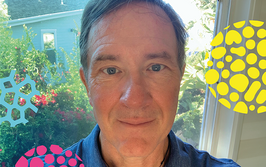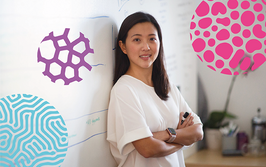The Emergence of Quantitative Raman
Raman spectroscopy has multifaceted appeal but requires an additional metrological dimension to make it a truly competitive quantitative technology.
From its origin in a focused beam of sunlight in the Indian city of Kolkata, Raman spectroscopy has come a long way over the last 80 years. Chandrasekhara Venkata Raman discovered that when light passes through a transparent material, some of the deflected light changes in wavelength because of inelastic scattering of photons – a phenomenon known as the Raman effect. The finding earned him the 1930 Nobel Prize in physics and has, for the most part, met the original objectives set out by Raman.
Raman techniques offer many advantages, including:
- minimal sample preparation
- non-destructive characterization
- chemical and structural measurements in aqueous media and air
- sub-micrometer spatial resolution
- affordable instrumentation
- the potential for real-time quantification
Such a combination of characteristics is highly desirable for chemical analysis in many industries, particularly in research and development, and quality control or assurance. Here, I will focus on the quantitative capabilities.
In his 1930 Nobel lecture, Raman said that, “From a physical point of view, the quantitative study of the [Raman] effect with the simplest molecules holds out the largest hope of fundamental advances.” This remains true today: hardware and software tools have advanced and spontaneous Raman scattering is sufficiently mature to be further developed. Fully understanding all the spectroscopic information available opens doors into quantitative chemical analysis of even the most complex environments, for example, biological systems. But one major caveat remains: in many cases, measurements require quantification defined by the International System of Units (SI units) – the meter and the mole.
The wide-ranging literature on Raman spectroscopy indicates that it is expanding from its roots in chemical and materials science to measurements in biological and medical settings. But, while it’s true that Raman spectroscopy used in conjunction with chemometric tools opens up exciting quantitative opportunities, until we address that roadblock of traceable measurements, it is likely to remain as a qualitative tool. To that end, the European National Measurement Institutes (NMIs), the National Institute of Science and Technology (NIST, USA), the National Institute of Metrology Quality and Technology (INMETRO, Brazil) and three leading universities have joined forces for the “Metrology for Raman Spectroscopy” consortium led by the National Physical Laboratory (NPL, UK). The project is jointly funded by the European Metrology Research Programme (EMRP), the participating countries within EURAMET, and the European Union.
This consortium is focused on making instrumentation and measurement more reliable, with emphasis on applications in biotechnology, medical technology, pharmaceutical, forensic, and surface analysis sectors. But the truth is, complex optimization of instrumentation, accurate measurement of sampling volume, and calibration of Raman intensities are all critical to achieving our ambitious objective.
NIST has previously developed relative intensity correction standards for Raman spectroscopy (NIST SRM 2241-2244), but there are no absolute standards available. There is a need for certified reference samples that enable calibration of both spatial and depth resolutions of Raman instruments.
In many cases, users make their own calibration samples for quantification of Raman intensities; however, accurate quantification is not possible without rigorous determination of the sampling volume, a fact that is often ignored. In biological tissue imaging, optical properties play an even greater role in quantification of chemical substances. Therefore, we are currently in the process of developing reference samples that will not only provide sample volumes at different depths, but also indicate the range of depth where measurements are most reliable.
Raman spectroscopy has a growing family of applications, with expanding needs (and a long list of acronyms). For example, surface enhanced Raman spectroscopy (SERS) uses a standard spontaneous Raman microscope to provide very sensitive Raman measurements, but it is often difficult to quantify the SERS signal because of irreproducible amplification To address this, researchers at the Physikalisch-Technische Bundesanstalt (PTB, Germany) have developed an isotope-dilution method that allows quantification of nanomolar concentrations of analytes. This is another welcome move towards meeting the metrological needs of Raman scattering.
In addition to spontaneous Raman scattering, a number of other advanced Raman techniques have emerged over the past two decades. Amongst these, tip-enhanced Raman spectroscopy (TERS), and multiphoton Raman scattering techniques, such as coherent anti-Stokes Raman spectroscopy (CARS) and stimulated Raman scattering (SRS), deserve particular mention because of their high confocal spatial resolution and temporal resolution, respectively. Some groups have demonstrated that TERS is able to achieve spatial resolution below 1 nm, and SRS has been used to conduct video imaging. Both are impressive feats that will have significant applications – once we have traceable measurements.
Beyond the requirement for the calibration of spatial resolutions, a further challenge for TERS is tip reproducibility. A well-defined tip-shape, well-controlled tip size and a smooth tip-surface are instrumental in controlling surface plasmon resonance energy. Right now, many research groups follow their own recipe for tip preparation, either by electrochemical etching or thermal evaporation of metals on cantilever tips. Our consortium, which also includes a commercial tip manufacturer, believes that a standard tip-manufacturing procedure will improve consistency. The spatial resolution achievable in TERS depends on the size of the tip used, yet there is no standard best practice guide that researchers can follow.
While these coherent Raman scattering techniques are relatively new, their potential value in medical diagnostics is already becoming apparent; for example, 3D chemical imaging of skin for next generation of topical pharmaceuticals and cosmetic products. However, many of these CARS and SRS systems were assembled in various laboratories by different research teams, meaning that, while they share the same basic approach, the execution inevitably varies substantially. The development of standard procedures and reference samples will greatly facilitate the entry of TERS, CARS and SRS instrumentation into diagnostic, medical or other industrial applications.
A few years ago, Sunney Xie’s group at Harvard University published benchmark studies quantifying the sensitivity of the SRS signal and showed that, though amplified, it matches the spontaneous Raman signal (unlike the CARS signal). However, the capabilities of Raman technology have not been extensively compared with other techniques such as mass spectrometry, IR absorption or confocal fluorescence microscopy. Reference samples would enable benchmarking of sensitivity against other tools and to meet this need, our consortium will prepare a calibration sample for depth resolution of CARS and SRS instruments that can be used in research laboratories to improve the accuracy of 3D chemical imaging of cells and tissues.
It is exciting to see Raman spectroscopy emerge as a quantitative tool for chemical analysis eight decades after its discovery. I envisage that spontaneous Raman scattering will find wider applications in industrial process control as well as in medical diagnostics in the near future. And, I predict that in the next 20 years, novel implementations of Raman scattering (namely near-field and multiphoton Raman scattering) will further improve spatial and temporal resolution. In the meantime, the traceability of the measurements to SI units is an absolute necessity.
National measurement institutes around the world, along with some of the best academic laboratories, are playing a key role in developing the necessary calibration samples, best practice guides and documentary standards. Our efforts should enable instrument manufacturers, regulators, researchers and users to move forward on the same platform, promote coherent growth of the technique, and ensure reliability of measurements for critical assessments. Lend us your ears!
Debdulal Roy is a researcher at the National Physical Laboratory (NPL), UK. Deb obtained a BTech from the Indian Institute of Technology in Kharagpur, India, prior to getting his PhD degree as a Nehru Scholar from the Department of Materials Science and Metallurgy, University of Cambridge, UK. “I worked on a thesis entitled “Raman Spectroscopic Study of Carbon Nanostructures”, after which I spent two years at the Nanoscience Centre, University of Cambridge in Mark Welland's lab before joining NPL as a Strategic Research Fellow in 2005,” says Deb, “During this period I worked on developing a tip-enhanced Raman spectrometer in reflection mode.” Deb collaborates with a number of research groups in universities including University of Cambridge, University of Bristol, CNRS-Orleans and King's College London on various topics in scanning probe microscopy and analysis of nanostructures. Deb now leads the research area on Analytical Nanoprobes at NPL.

















